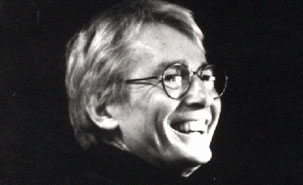RAMÓN PELINSKI AND THE SCORES

HOW THE SCORES COME TO OUR HANDS
Buenos Aires, Argentina. Lavalle, nº 1547, fifth floor, nest to the lift, was the Argentine Society and Composers’ Cultural Department.
There, José Bragato, composer, cellist and arranger of many works by Astor Piazzolla had his office. Bragato believed it necessary to liberate Piazzolla’s music from its one misfortune: the bandoneon. This nomadic German had arrived in Buenos Aires more than a century earlier and had appropriated the tango – and Piazzolla’s music, as is well known, was singularly based in the bandoneon. When in 1983 I was in Buenos Aires, looking for music for a tango quartet that I had founded in Montreal, I went to see José Bragato. He did not hesitate for a moment to offer me copies of his arrangements for Piazzolla’s string quartets and piano works. I could not imagine then that one day, being a Catalan neighbor, I would meet in Girona the Quartet Gerió musicians, who were also looking for tango music. I had no doubt in offering them the same copies that Bragato had given me. Most of these arrangements are those that the Quartet Gerió includes today in its repertoire. So far the anecdote. Voilà!
Although twenty-five years later the notes remain the same, the way of interpreting them has been changing. It would be a futile task to want to imitate today the pragmatic style of those two Buenos Aires quintets for whose musicians Piazzolla used to write his music: a strange opposition of implacable rhythm and sublime melody, of corporeal effect and emotional affect, of volcanic eruption and infinite tenderness that his musicians knew wake.
Since Piazzola’s disappearance (1921-1992), only groups aware that the shortest path leading to Rome is not that of imitation but that of reinterpretation, have managed to illuminate, each in their own way, blurred features of Piazzolla’s music: its contrapuntal texture that perhaps the rhythmic and melodic preponderance of the old “authentic performances” concealed, and its rational organization of the musical material, underlying the vehemence with which those performances dragged the public. Instead, in the present performance of the Quartet Gerió the voice of sanity is audible: temperance, the decadent autumn beauty of Oblivion with an exquisite variation of the piano coming from jazz – a music to which Piazzolla had given half of his soul – and does not allow the privilege granted by the ‘authentic’ versions to the rhythmic and melodic invention of the Cuatro Estaciones Porteñas, to erase other musical subtleties that Piazzolla’s score contains.
The works selected for this album, which was recorded in 2009, are great successes of Piazzollean music. Except for the late Oblivion and Four, for Tango, the other pieces were composed between 1954 and 1967, a period of enormous creativity in which Astor Piazzolla defined the features of his personal style. Death of the Angel and Milonga del Ángel are two stylistic models that Piazzolla often resorted to: the rhythmic predominance of tango that represents the dynamic and violent side of the big city, and the slow milonga that transmits the solitude and melancholy of the Buenos Aires neighborhoods. These emotions come together in each of the Cuatro Estaciones Porteñas, more elaborate pieces in which Piazzolla leaves the listener to answer if it is Buenos Aires tango that aspires to transform into chamber music, or chamber music that remembers its roots in Buenos Aires neighborhoods. This aesthetic ambiguity is a specific resource of kitsch as an art of deception, a compositional cunning that serves the omnipresent piazzollean music lover, as a promise of happiness (or parody of catharsis) thanks to the passing emotional affect produced by the effect of his rhythmic obsession with the 3 + 3 + 2, the timbre charm of the bandoneon and the surprising beauty of some melodies.
Adiós, Nonino, composed in memory of his father, is Piazzolla’s most famous tango:
“I set myself a thousand times to make a superior one and I couldn’t. It has an intimate tone, it seems almost funeral and yet it broke with everything. The day we premiered it, with the Quintet, the musicians and I said ‘this is not going to be damn, nobody is going to like it, but let’s play it, it’s nice. It was a time when almost all the songs in the repertoire had the polenta of Calambre, Los Poseídos, Lo que vera, … And Adiós, Nonino ended upside down, like life, it went away, it faded. People liked it from the start. I would say that because it has a special mystery, the melody, and in contrast to the melody, the rhythmic part, the change of tone and that glorious ending with a sad ending. Maybe he liked it for that, because it was different from everything”.
So, Gerió added one more to the 170 existing recordings of this tango.
Astor Piazzolla’s new tango is largely the result of a unique fusion between Buenos Aires tango and other music – jazz, rock, or scholarly music. Piazzolla, rooted in Buenos Aires tango, is at the same time the nomadic composer always ready to deterritorialize himself on the music of the Other, and to integrate it within his own invention: the New Tango. Trips, voluntary exiles and concert tours are mirrored in his style of composition which, sure of its identity anchorage in Buenos Aires tango, assumes different masks without being confused with any of them. Piazzolla in jazz or scholarly composer key is the nomad who remains loyal to his place of origin: the Buenos Aires tango that, like a murmur or a perfume, envelops all his compositions.
Piazzolla composed music for a music lover audience willing to become an accessory to the seduction of an ‘ineffably beautiful’ melody, or to actively indulge in the corporal body experience ’of an inescapable rhythm. Piazzolla’s compositional strategy consists of achieving a peaceful coexistence of the diverse in a space of sonic pleasure converging with kitsch.
In short, Piazzolla melts and confuses musical alterities in the clear identity of his very personal style. Reluctant to classifications, her music permeates the boundaries between popular and scholarly music, local and global, avant-garde and classical, in a metastasis of tango joys that invades the composition process, the practice of interpretation, the reception of her music and, why not, the temptation to make a record with it.
-Ramón Pelinski (1932-2015)
